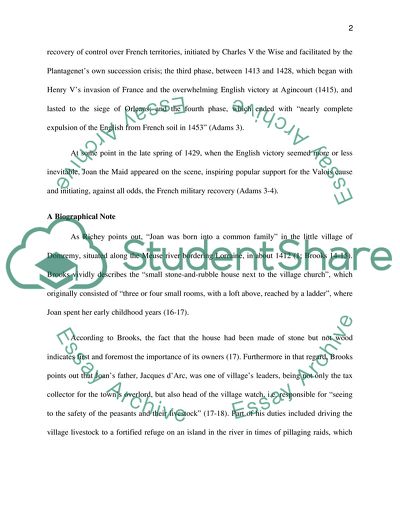Cite this document
(Beyond the Myth: The Story of Joan of Arc Literature review Example | Topics and Well Written Essays - 2250 words - 2, n.d.)
Beyond the Myth: The Story of Joan of Arc Literature review Example | Topics and Well Written Essays - 2250 words - 2. https://studentshare.org/history/1804395-joan-of-arc
Beyond the Myth: The Story of Joan of Arc Literature review Example | Topics and Well Written Essays - 2250 words - 2. https://studentshare.org/history/1804395-joan-of-arc
(Beyond the Myth: The Story of Joan of Arc Literature Review Example | Topics and Well Written Essays - 2250 Words - 2)
Beyond the Myth: The Story of Joan of Arc Literature Review Example | Topics and Well Written Essays - 2250 Words - 2. https://studentshare.org/history/1804395-joan-of-arc.
Beyond the Myth: The Story of Joan of Arc Literature Review Example | Topics and Well Written Essays - 2250 Words - 2. https://studentshare.org/history/1804395-joan-of-arc.
“Beyond the Myth: The Story of Joan of Arc Literature Review Example | Topics and Well Written Essays - 2250 Words - 2”. https://studentshare.org/history/1804395-joan-of-arc.


